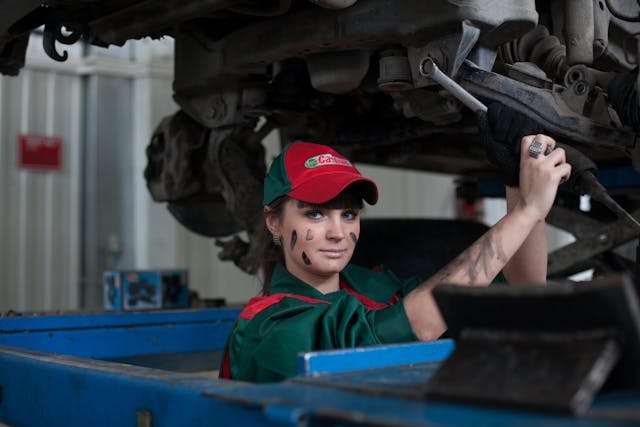Introduction
The fashion industry is undergoing a significant transformation as sustainability becomes a top priority for consumers and brands alike. Eco-friendly fashion designer jobs are at the forefront of this movement, offering opportunities to create stylish, environmentally responsible clothing. If you’re passionate about fashion and committed to making a positive impact on the planet, a career in sustainable fashion design might be perfect for you.
The Rise of Sustainable Fashion
Sustainable fashion is more than just a trend; it’s a response to the growing awareness of the environmental impact of the fashion industry. Traditional fashion production methods often involve harmful chemicals, excessive water usage, and unethical labor practices. In contrast, sustainable fashion focuses on reducing waste, using eco-friendly materials, and promoting fair labor practices.
What Does an Eco-Friendly Fashion Designer Do?
Eco-friendly fashion designers create clothing and accessories using sustainable materials and methods. Their responsibilities include:
- Research and Development: Identifying eco-friendly materials and innovative production techniques.
- Design: Creating aesthetically pleasing and functional designs that align with sustainable principles.
- Sourcing: Selecting suppliers who adhere to ethical and environmental standards.
- Collaboration: Working with other departments, such as marketing and production, to ensure sustainability goals are met.

The Skills Required
To thrive in eco-friendly fashion design, a range of skills is necessary:
- Creativity and Innovation: Designing appealing fashion that minimizes environmental impact.
- Material Knowledge: Understanding and selecting sustainable fabrics and materials.
- Technical Proficiency: Using design software and staying updated on industry trends.
- Project Management: Overseeing the entire lifecycle of a product, from concept to production.
- Ethical Awareness: Commitment to fair labor practices and environmental stewardship.
Current Opportunities in Eco-Friendly Fashion Design
The demand for sustainable fashion is growing, and with it, the number of job opportunities. Here are some current openings in the field:
- Sustainable Sourcing Agent: Lupine Lane Co. (Remote – Worldwide)
- Sustainability Intern: Staiy (Remote)
- Design Intern: Brother Vellies (New York or Los Angeles, California)
- Product + Technical Design Intern: ADAY (London or New York, United States)
- Creative Marketing Intern: MUD Jeans (Laren, The Netherlands)
- Growth Marketing Analyst: thredUP (Oakland, California)
How to Find Eco-Friendly Fashion Designer Jobs
Finding a job in sustainable fashion can be challenging, but there are several strategies to increase your chances:
- Networking: Connect with professionals in the industry through events, social media, and professional organizations.
- Internships: Gain experience and make connections by interning with sustainable fashion brands.
- Job Boards: Use specialized job boards like the Sustainable Fashion Forum Job Board to find relevant opportunities.
- Education: Pursue degrees or certifications in fashion design, sustainability, or related fields to enhance your qualifications.
Spotlight on Pioneers in Sustainable Fashion
Several designers and brands have paved the way for eco-friendly fashion, serving as inspiration for those entering the field:
- Stella McCartney: A trailblazer in sustainable luxury fashion, McCartney’s brand is renowned for its commitment to ethical practices and innovative materials.
- Eileen Fisher: Known for timeless designs and sustainable initiatives, Fisher’s brand emphasizes environmental responsibility and social good.
- Patagonia: This outdoor clothing brand is celebrated for its eco-friendly products, activism, and transparency about its supply chain.
Innovations in Sustainable Fashion
The eco-friendly fashion industry is driven by innovation. Here are some groundbreaking trends and technologies:
- Bio-fabrication: Using living organisms to grow materials like leather and silk, reducing the need for traditional animal and chemical-intensive processes.
- Recycling and Upcycling: Transforming waste materials into new fashion items, minimizing landfill waste, and conserving resources.
- Eco-Friendly Dyes: Developing non-toxic, water-efficient dyeing processes that reduce environmental harm.
- 3D Printing: Creating custom garments with minimal waste, revolutionizing the production process.
The Future of Eco-Friendly Fashion Design
The future of fashion lies in sustainability. As consumers become more environmentally conscious, the demand for eco-friendly fashion will continue to grow. This presents an exciting opportunity for designers to innovate and lead the way in creating a more sustainable industry.
Conclusion
Eco-friendly fashion designer jobs offer a unique blend of creativity and environmental responsibility. If you’re passionate about fashion and committed to making a positive impact, this career path could be the perfect fit for you. Embrace the challenge and join the movement towards a more sustainable future.









